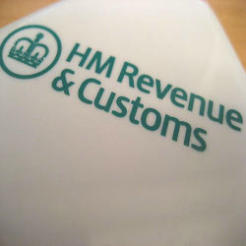Robert Warne discusses three options for obtaining a refund from VAT payments for temporary workers.
When HMRC withdrew the concession for the VAT treatment of temporary staff on 1 April 2009, costs increased for organisations that were not in a position to recover all VAT. This was because VAT had to be charged on the whole amount paid for the temporary worker, rather than just on the employment bureau commission that it retained for providing the worker.
Reed Plc won a case at the First-Tier Tribunal which gave some hope that there could still be a way to exclude the wage element from the consideration payable, for VAT purposes. However, Reed considered the contractual arrangements that were in place prior to 1996, which HMRC argued did not impact those after 1 April 2009. As a result of this case, despite Reed’s victory, HMRC has continued to enforce its ruling that VAT is due on the full consideration charged on the supply of temporary workers.
This stance has been subject to intense scrutiny. There are a number of cases due to be heard in the courts which will seek to establish a legal decision, led by Adecco. While not-for-profit organisations have been involved in formulating and financing this litigation, those not involved still have a number of options available to them.
Do nothing
This clearly has some attraction in terms of avoiding any potential outlay until you are reasonably certain that it will yield a refund. The disadvantage of this approach is that it could be years before the litigation has run its course, so by the time your suppliers start discussing a potential refund with you some of the earlier periods will have fallen out-of-time to adjust.
The limit for going back on VAT reclaims is four years. The change in treatment started in 2009. If the case is resolved by the end of 2015 only years 2012-15 would qualify for any refund.
Join the litigation processes
This is likely to involve a professional adviser acting for the litigants reviewing your claim in detail, including a review of the legal agreements and the quantum of the claim, and putting in letters to the relevant suppliers requiring them to submit protective claims for the VAT overcharged. The main disadvantage of this approach is cost.
We understand that some advisers require a substantial fee for each claim made, while others may undertake it on a contingent basis and demand a fee for any VAT refund achieved.
Contact suppliers yourself
The third option is to write to your suppliers yourself, setting out why you understand a refund may be due (and if possible what you expect the value of this refund to be). You could ask them to confirm whether they would be prepared to make the necessary protective claims to HMRC to protect the years 2010-13, pending the outcome of a court judgment.
If your supplier is not familiar with the litigation you could provide them with the relevant information for them to come to their own conclusions. However, if they refuse on principle to go against HMRC’s current policy, or require you to fund any action before they make a protective claim on your behalf, you may decide the best approach forward would be to await the court judgment.
This may mean receiving a smaller refund compared to the second option, should the cases being heard be decided in favour of the taxpayer, but would avoid any ill-feeling with suppliers who are potentially having to put VAT claims in on your behalf.
Robert Warne is a VAT partner at Crowe Clark Whitehill.









